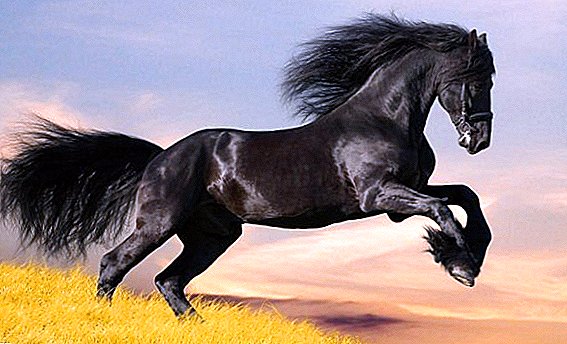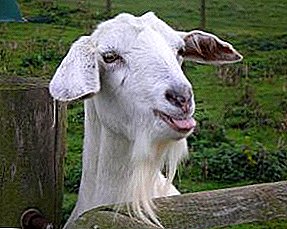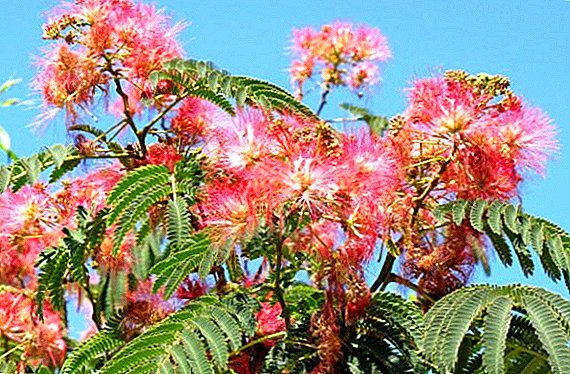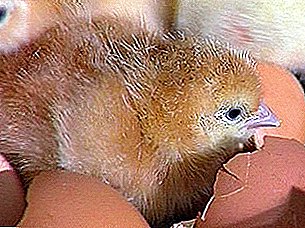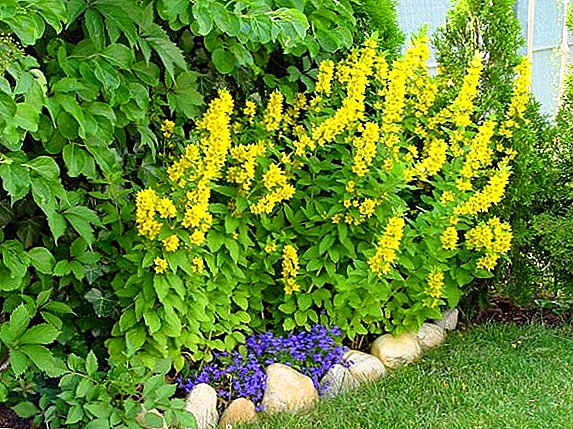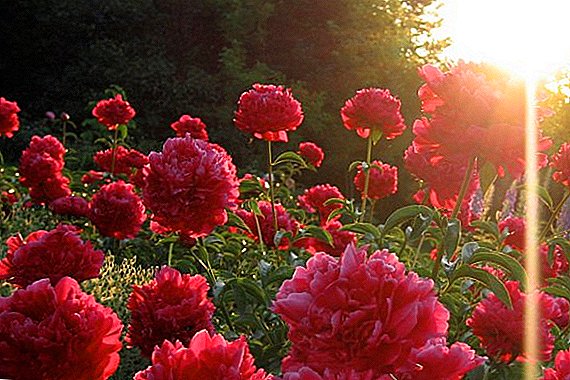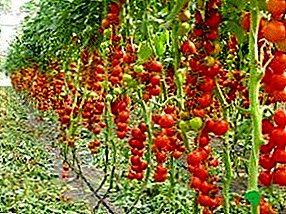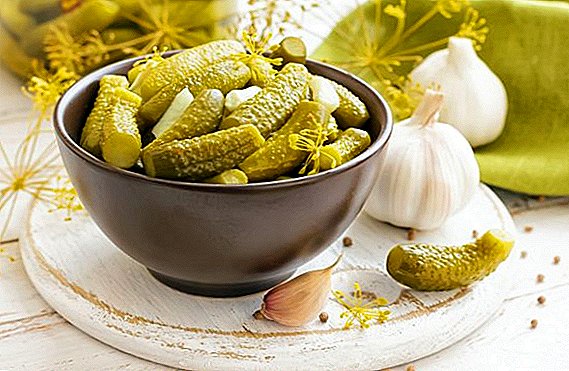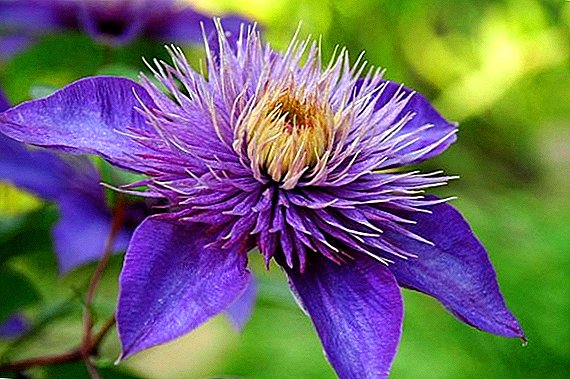 Clematis is a magnificent flower, charming with tenderness and generous flowering. To fully feel the beauty of this exotic plant, you just need to try to grow it. Huge, waterfall-falling flowers force the gardener to take care of the plant as thoroughly as possible, although, by the way, clematis does not need this at all.
Clematis is a magnificent flower, charming with tenderness and generous flowering. To fully feel the beauty of this exotic plant, you just need to try to grow it. Huge, waterfall-falling flowers force the gardener to take care of the plant as thoroughly as possible, although, by the way, clematis does not need this at all.
Important! Clematis is a poisonous plant. Despite the fact that it is less dangerous than other poisonous garden plants, it is necessary to avoid contact with its juice, as it causes skin itching and burning. Also remember that even small amounts of clematis leaves or juice can cause stomach bleeding and intestinal colic.
Cultivation of this creeper will not cause difficulties even for a beginner plant breeding, and therefore anyone who wants to enjoy the contemplation of its luxurious flowering will be able to start clematis in his garden.
Clematis to the Urals: the best varieties for growing
The weather conditions in the Urals are quite harsh, and therefore there is very often uneven distribution of precipitation. Those who live in the Urals should take the most responsible approach to the selection of clematis varieties.
 Far from the best option clematis for the Urals are types of Peter, vineyard and evergreen, as they do not always tolerate the winter. Also not suitable for growing species such as Eastern, burning and Violet, since their endurance is enough only to carry -20 ° C, and this is absolutely not enough to survive the harsh Ural winters. Such vines will feel good in greenhouses, greenhouses, winter gardens or as pot plants.
Far from the best option clematis for the Urals are types of Peter, vineyard and evergreen, as they do not always tolerate the winter. Also not suitable for growing species such as Eastern, burning and Violet, since their endurance is enough only to carry -20 ° C, and this is absolutely not enough to survive the harsh Ural winters. Such vines will feel good in greenhouses, greenhouses, winter gardens or as pot plants.
The best varieties of clematis for the Urals - these are those that belong to the second and third group, shoots which for wintering partially shortened or completely removed. Many types of clematis require high-quality shelter for the winter period. If we take as a basis the classification of the species by the maternal line, for the Urals it is recommended to choose the following types:
- Clematis Jakman hybrid varieties they are a large-flowered bush-shaped liana that grows over shoots up to 4 meters in length. The bushes are covered with pretty feathery leaves and have a well-developed root system. They do not need special care and even they will give you minimal attention with beautiful lilac flowers reaching 20 cm in diameter. This variety is distinguished by its generous and long flowering. During preparation for wintering, the plant is cut either completely or leaves shoots no longer than 30 cm.
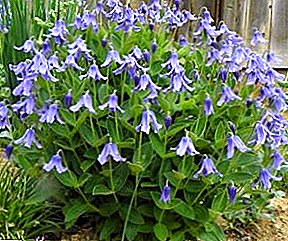
- Integrifolia (hybrid varieties of clematis) botanists were ranked as a separate group of shrub clematis, whose representatives can reach a maximum length of 2.5 meters. During the flowering period, the vines are covered with charming bell-shaped flowers that reach up to 12 cm in diameter.
- Vititsella (hybrid varieties of purple clematis) - It is a bush shaped creepers. The plant has shoots reaching a length of up to 3.5 meters, on which complex leaves form and delightful large flowers that can reach up to 12 cm in diameter. They are mostly pink, purple and red. During the flowering period, one large bush is covered with hundreds of flowers.
Choosing a place for planting clematis
When planting clematis in the Urals, it is necessary to take a responsible approach to the choice of a cultivation site.
Important! If you are going to grow clematis, remember that the plant is afraid of cold wind and drafts, and therefore, if you make a mistake in choosing a place for it in your area, then the plant is unlikely to please you with active flowering and rapid development.
 Place for growing vines should be dry, without stagnant water in the spring. If the chosen place is characterized by a close location of the soil waters, then a drainage of at least 20 cm height made of crushed stone or broken brick must be equipped. Due to the fact that clematis is a vine, it needs the organization of a support. At first, of course, you will have to tie up the plant, but as it grows, it will begin to cling to the support itself with the help of leaf petioles.
Place for growing vines should be dry, without stagnant water in the spring. If the chosen place is characterized by a close location of the soil waters, then a drainage of at least 20 cm height made of crushed stone or broken brick must be equipped. Due to the fact that clematis is a vine, it needs the organization of a support. At first, of course, you will have to tie up the plant, but as it grows, it will begin to cling to the support itself with the help of leaf petioles.
Clematis loves the light, and therefore the place for its landing should be sunny and protected from drafts and winds.
Features of landing of clematis in the Urals
In the open ground planted vines in the fall or spring. In the event that you bought clematis sapling in late autumn, it is better to prikopat it until spring and land in open ground with the arrival of warm days. If you purchased a sprout in summer, the root system of which is located in a closed container, then it is planted in the ground in the fall. After planting and before rooting, the plant needs to organize high-quality shading, which will protect it from direct sunlight. If you purchased a sprout with slightly dried roots, then in order to increase the root formation and survival of the plant, it must be soaked for 6 to 8 hours in water to which Epin was previously added.
Selection of seedlings
When choosing clematis seedlings, remember that in order for it to settle down in the Urals and trouble-free cultivation, it is necessary to carefully inspect the ground part and rhizome for the presence of mechanical damage, as well as defeats by infectious diseases. If you notice a non-healing wound on the germ when you purchase it, then most likely the plant is affected by the fungus, and therefore it is better to refuse to purchase it.
Carefully inspect the rhizomes of seedlings. You can safely buy a sprout, if the central roots are covered with a dense carpet of small roots, are not dried, do not have mechanical damages and lesions with rot or mold. If the cutting you chose has only the main root, devoid of side branches, then the climber is unlikely to take root or it will hurt for a very long time.
Landing pit preparation
 Clematis is unpretentious, but it is very sensitive about the choice of soil. The plant prefers a light, well-fertilized and breathable primer. If clay or loamy soils predominate on your site, then in order to improve their aeration characteristics, it should be mixed with sand in preparation of the soil.
Clematis is unpretentious, but it is very sensitive about the choice of soil. The plant prefers a light, well-fertilized and breathable primer. If clay or loamy soils predominate on your site, then in order to improve their aeration characteristics, it should be mixed with sand in preparation of the soil.
The success of growing clematis depends on the correct planting and care of the plant, Especially important is the fulfillment of all requirements when growing vines in the Urals. When planting a bush, you must first dig a square hole 60 cm in depth, as well as 60 cm in width and length. In the center of the pit have a drainage hill, which is covered with a substrate consisting of equal parts of compost, humus and garden soil. In addition, 150 g of superphosphate and 400 g of dolomite flour are added to it.
How to plant clematis
When planting clematis should install a seedling in the center of the pit on the drainage hill. Now gently spread the roots over the mound and fill them with prepared soil. After planting the vines, it is necessary to slightly consolidate the soil in the stalk zone and tie the sprout to a pre-installed support.
Did you know? The larger the clematis sapling, the deeper it will be necessary to prepare the pit for its planting.
After planting, the plant should be watered with warm water. Remember that in order to prevent rotting of creeper roots, it is necessary to water it at room temperature at first.
How to care for clematis in the Urals
 Non-capricious clematis will not require specific conditions for plant growing when it is grown. The plant will be immensely grateful to you for timely watering, fertilizing, loosening the soil and pruning. Proper care of a handsome man is the key to his generous flowering. Ground cover plants can be placed around the bush to enhance the decorative characteristics of the site, which will help protect the roots of the vine against overheating on a hot sunny day and will prevent the rapid evaporation of moisture.
Non-capricious clematis will not require specific conditions for plant growing when it is grown. The plant will be immensely grateful to you for timely watering, fertilizing, loosening the soil and pruning. Proper care of a handsome man is the key to his generous flowering. Ground cover plants can be placed around the bush to enhance the decorative characteristics of the site, which will help protect the roots of the vine against overheating on a hot sunny day and will prevent the rapid evaporation of moisture.
Watering
To clematis pleased good growth, will require the organization of proper watering. Irregular watering is the main reason leading to the death of the plant. Liana reacts poorly to frequent and minor watering, especially dangerous for her is watering in the center of the bush. Such actions can lead to the defeat of the root neck of the plant rot, and, in addition, moisture simply can not penetrate deep into the ground, where the roots of clematis are located.
The roots of the vines are quite massive and are very deep, and therefore the plant needs good watering: an adult bush should receive at least three buckets of water at a time. Watering is best done every four days, but so that the water does not spread in a shallow puddle, but penetrates deep into the soil. To do this, around the bush to form a round hole at a distance of 40 cm from the trunks of the bush. When planting a plant, it is possible to dig three small pieces of plastic pipes into the ground obliquely and slowly pour water into them during watering.
Top dressing
 Clematis requires the introduction of large doses of fertilizers, which is explained by the fact that the plant has a long and generous flowering, and besides, it needs strength for the annual renewal of the ground part.
Clematis requires the introduction of large doses of fertilizers, which is explained by the fact that the plant has a long and generous flowering, and besides, it needs strength for the annual renewal of the ground part.
Important! Remember that fertilizer should be applied to the soil when growing clematis often, but in small portions, since a single administration of significant doses of fertilizers can cause damage to its roots by chemical burns.
When growing clematis, it is necessary to alternate the introduction of organic and mineral fertilizers. Lian should be fed at least 4 times per season. Before the introduction of fertilizers, the plant must be watered well, as this will prevent the occurrence of chemical burns.
In the autumn, before preparing the bush, for wintering, bone meal in the amount of 200 g per square meter is introduced into the ground. The secret is that for full growth the plant needs large doses of phosphorus. Without this trace element, its leaves will begin to grow brown, and the bush itself will stop developing. You can also please the plant with humus.
Did you know? Clematis bush, which is at the flowering stage, is not recommended to feed, as this will cause a significant reduction in the flowering period.
 At the stage of active vegetative development, clematis needs additional fertilizing with nitrogen, since with its shortage the plant will not be able to fully reveal its genetic potential, and its leaves and flowers will be small, may begin to turn yellow and become reddish. To compensate for the lack of nitrogen, you can feed bushes of slurry diluted in water or bird droppings. Organic fertilizers must be alternated with mineral. Liana loves ammonium nitrate, urea and nitroammofosku. In springtime, plants also need to be injected with potassium. During this period, the bushes should be fed with potassium nitrate.
At the stage of active vegetative development, clematis needs additional fertilizing with nitrogen, since with its shortage the plant will not be able to fully reveal its genetic potential, and its leaves and flowers will be small, may begin to turn yellow and become reddish. To compensate for the lack of nitrogen, you can feed bushes of slurry diluted in water or bird droppings. Organic fertilizers must be alternated with mineral. Liana loves ammonium nitrate, urea and nitroammofosku. In springtime, plants also need to be injected with potassium. During this period, the bushes should be fed with potassium nitrate.
With the onset of the first warm spring days, the bushes are poured over with lime milk, which helps prevent the soil from souring.
Pruning
Pruning is the most important component of successful clematis cultivation.. It is necessary for the prevention of thickening and rejuvenation of the bushes, as well as increasing the intensity of flowering. Spring pruning of weak, thin and damaged shoots helps to prolong flowering. In the summer, minor branches are removed from the bush, which stimulates the emergence of new shoots and prolongs flowering.
Almost all varieties of clematis after planting at the expense of the main stem intensively stretch upwards, so they are pruned, leaving only a few strong buds. This manipulation stimulates the formation of several basal stems.
 When pruning clematis Jacquesman, Vititsella, Intergrifolia, in which shoots bloom in the first year of life, the removal of old shoots is carried out in early spring almost at the root, which stimulates the growth of new branches.
When pruning clematis Jacquesman, Vititsella, Intergrifolia, in which shoots bloom in the first year of life, the removal of old shoots is carried out in early spring almost at the root, which stimulates the growth of new branches.
Clematis support
For the normal development of creepers need to install support, which can be represented by arches, pyramids and luxurious fan designs. When choosing a support, remember that the thickness of its elements should not exceed 1 - 1.2 cm. You should also note that, growing, shoots gain significant weight, and therefore not every material can withstand them.
Important! When choosing a support, you should not plant clematis at a distance of less than half a meter from the brick wall, and the plant should be placed much further from the metal fence, since the presence of such structures will negatively affect its development.Fine metal cylinders made of mesh and dug near the bushes are an excellent support for the bushes. No less charming look and arch of the plates. Such elegant designs will easily become the main decoration of any site.
Methods of reproduction of clematis in the Urals
 Clematis propagated by layering, dividing the bushes and grafting. All these methods are vegetative, and therefore allow you to fully preserve all varietal characteristics and get plants with their own root system. The most popular breeding species for clematis in the Urals is grafting.
Clematis propagated by layering, dividing the bushes and grafting. All these methods are vegetative, and therefore allow you to fully preserve all varietal characteristics and get plants with their own root system. The most popular breeding species for clematis in the Urals is grafting.
The shoots taken from the bush are divided into cuttings from 8 to 10 cm long and placed for a day in the solution to stimulate the roots, after which they are planted in a greenhouse and covered with a glass jar. Before the roots appear, the soil where the seedlings are placed is sprayed with water and kept constantly wet. After the sprouts acquire their own roots, they are planted for permanent residence.
Not less popular is the division of the bush. This method is used when the vine has grown heavily, or when a bush is transplanted to a new place. Shared bushes in early spring or autumn. After the bush is dug, it is divided into several independent plants, which are then planted in the ground.
Novice gardeners propagate clematis by layering. To obtain planting material, young shoots of the bush are laid in the holes prepared in advance and covered with earth, leaving the upper part of the shoot above the ground. Over time, the buds germinate, and shoots are formed from them, which are then separated from the parent bush, divided into independent plants and planted in separate pits.
How to protect the vine in winter
 With the onset of autumn, you need to think about how to protect clematis in the Urals from low temperatures in winter. To do this, with the onset of cold weather, in dry weather, pour a bucket of humus into the center of the bush, after removing all the lower leaves from the plant and treating the root neck with copper sulphate. After that, the hilling of the bush is carried out to a height of about 15 cm with ash and sand.
With the onset of autumn, you need to think about how to protect clematis in the Urals from low temperatures in winter. To do this, with the onset of cold weather, in dry weather, pour a bucket of humus into the center of the bush, after removing all the lower leaves from the plant and treating the root neck with copper sulphate. After that, the hilling of the bush is carried out to a height of about 15 cm with ash and sand.
For shelter clematis bushes use only the dry method: The shoots of the plant are folded or twisted and laid on the base, after which they are covered with dry oak leaves, spruce branches or crushed foam. It is covered with a box, which is then covered with a piece of roofing material, roofing felt or other waterproof material, pressed down at the corners with bricks or stones and covered with a layer of earth on top.
Growing in the clematis garden opens up unlimited design possibilities to the plant grower. And if you do not be lazy and create comfortable conditions for the plant, then just a couple of clematis bushes will easily turn even the most modest part of the paradise.



